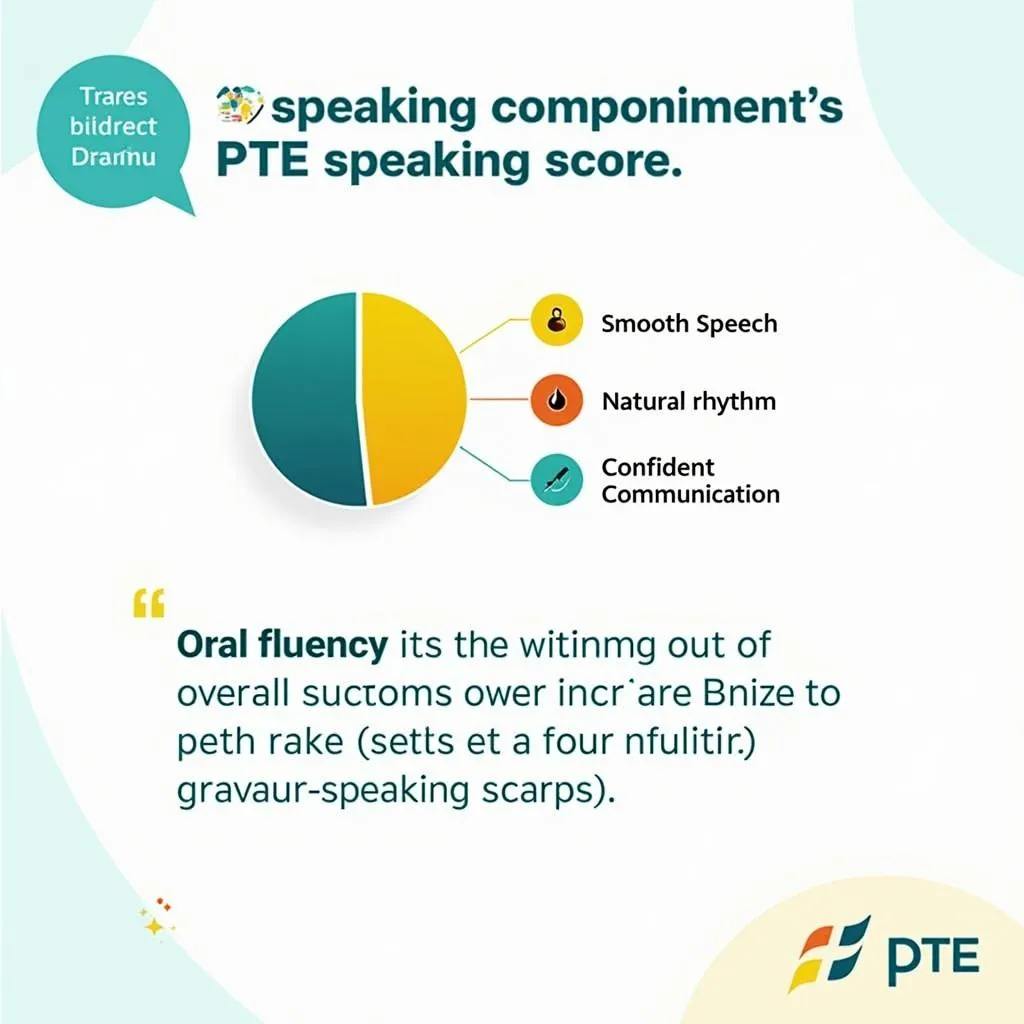Speaking fluently in English is a crucial skill for success in the PTE Academic test. The oral fluency component of the speaking module can significantly impact your overall score. In this comprehensive guide, we’ll explore effective exercises to enhance your oral fluency and help you excel in the PTE speaking section.
Understanding Oral Fluency in PTE Speaking
Oral fluency refers to your ability to speak smoothly, naturally, and without unnecessary pauses or hesitations. In the PTE speaking module, it’s assessed based on your pace, rhythm, and overall flow of speech.
Why is Oral Fluency Important?
Oral fluency accounts for a substantial portion of your speaking score. It demonstrates your comfort level with the English language and your ability to communicate effectively under pressure.
 Importance of Oral Fluency in PTE Speaking
Importance of Oral Fluency in PTE Speaking
Effective Oral Fluency Exercises for PTE Speaking
Let’s dive into some powerful exercises that can help you improve your oral fluency for the PTE speaking module.
1. Shadow Reading
Shadow reading involves listening to native English speakers and repeating what they say in real-time, mimicking their intonation and rhythm.
Steps to practice shadow reading:
- Choose a short audio clip or video with clear English speech.
- Listen to the audio while reading the transcript (if available).
- Play the audio again, this time repeating what you hear immediately after the speaker.
- Focus on matching the speaker’s pace, intonation, and pronunciation.
- Gradually increase the difficulty and length of the audio material.
Dr. Emma Thompson, a renowned PTE expert, emphasizes the effectiveness of shadow reading: “Shadow reading is an excellent way to internalize the natural rhythm and flow of English speech. It trains your brain to process and produce language simultaneously, which is crucial for oral fluency.”
2. Tongue Twisters
Tongue twisters are challenging phrases that help improve articulation and speech muscle control.
Here are some tongue twisters to practice:
- “Peter Piper picked a peck of pickled peppers.”
- “She sells seashells by the seashore.”
- “How much wood would a woodchuck chuck if a woodchuck could chuck wood?”
Practice these daily, starting slowly and gradually increasing your speed while maintaining clarity.
 Tongue Twisters for PTE Speaking Practice
Tongue Twisters for PTE Speaking Practice
3. Impromptu Speaking
Impromptu speaking exercises help you think and speak on your feet, improving your ability to generate ideas quickly and express them fluently.
How to practice impromptu speaking:
- Choose a random topic or use a topic generator.
- Set a timer for 1-2 minutes.
- Speak about the topic without preparation.
- Record yourself and analyze your performance.
- Focus on maintaining a steady flow of speech, even if you make mistakes.
4. Paced Reading
Paced reading involves reading aloud at a consistent speed, helping you develop a natural speaking rhythm.
Steps for paced reading:
- Select a passage from a book or article.
- Set a metronome or use a pacing app to establish a steady beat.
- Read the passage aloud, aiming to speak one word or syllable per beat.
- Gradually increase the pace as you become more comfortable.
Dr. Thompson notes, “Paced reading is particularly beneficial for candidates who struggle with speaking too quickly or too slowly. It helps establish a balanced pace that’s essential for clear communication in the PTE speaking tasks.”
5. Conversation Practice
Engaging in regular English conversations is one of the most natural ways to improve oral fluency.
Tips for effective conversation practice:
- Join language exchange groups or find a speaking partner.
- Participate in English discussion clubs or meetups.
- Use language learning apps that offer conversation practice with native speakers.
- Focus on maintaining the flow of conversation, even if you make grammatical errors.
 Conversation Practice for PTE Speaking
Conversation Practice for PTE Speaking
6. Paraphrase and Explain
This exercise involves explaining concepts or paraphrasing sentences in your own words, which is particularly useful for the PTE speaking tasks.
How to practice:
- Read a short paragraph or listen to a brief audio clip.
- Summarize the main points in your own words without looking at the original text.
- Record yourself and compare your explanation to the original.
- Focus on maintaining fluency while accurately conveying the information.
Integrating Oral Fluency Exercises into Your PTE Preparation
To maximize the benefits of these exercises, incorporate them into your daily PTE preparation routine:
- Dedicate at least 30 minutes each day to oral fluency exercises.
- Rotate between different exercises to keep your practice varied and engaging.
- Record yourself regularly to track your progress and identify areas for improvement.
- Seek feedback from native speakers or language tutors to refine your fluency.
- Use PTE-specific materials to ensure your practice aligns with the test format.
Remember, consistency is key. As PTE expert Dr. Thompson advises, “Regular practice is crucial for developing oral fluency. Even 15 minutes of focused practice daily can lead to significant improvements over time.”
Conclusion
Improving your oral fluency for the PTE speaking module requires dedication and consistent practice. By incorporating these effective exercises into your preparation routine, you’ll be well on your way to achieving a higher score in the PTE speaking section. Remember to focus on maintaining a natural flow of speech, and don’t be afraid to make mistakes – they’re an essential part of the learning process. With persistence and the right techniques, you’ll soon find yourself speaking English more fluently and confidently in your PTE Academic test.
FAQs
-
How long does it take to improve oral fluency for PTE speaking?
Improvement in oral fluency varies for each individual, but with consistent daily practice, most candidates see noticeable progress within 4-6 weeks. -
Can I practice oral fluency exercises alone?
Yes, many exercises like shadow reading, paced reading, and impromptu speaking can be practiced alone. However, incorporating conversation practice with others is also beneficial. -
How does oral fluency affect my overall PTE speaking score?
Oral fluency is a significant component of the PTE speaking score, influencing not only the fluency mark but also contributing to your overall clarity and coherence. -
Are there any mobile apps that can help with oral fluency practice?
Yes, several apps offer features for improving oral fluency, such as ELSA Speak, FluentU, and Tandem. Look for apps that provide speech recognition and pronunciation feedback. -
How can I overcome nervousness during the PTE speaking tasks?
Regular practice, especially with timed exercises and mock tests, can help reduce nervousness. Additionally, deep breathing exercises and positive self-talk before the test can calm your nerves.